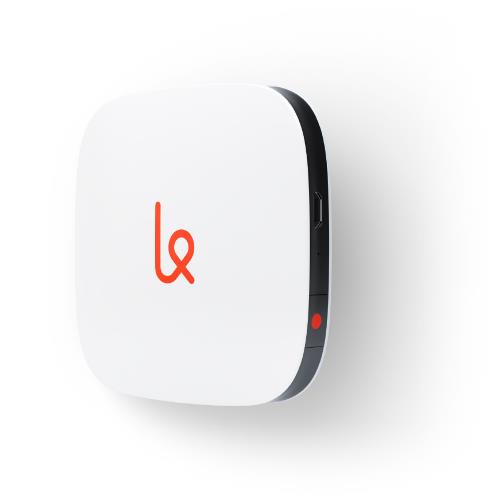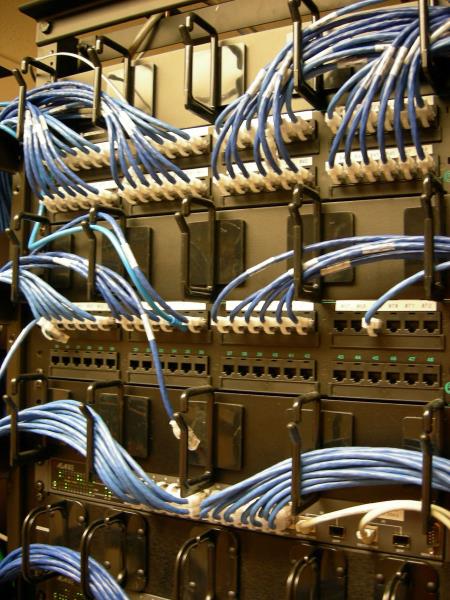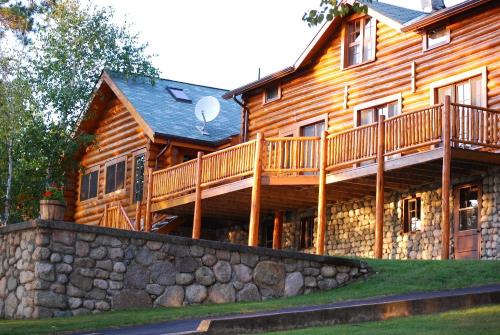Blog

Can Tiny Houses Have The Internet/Wifi?
When some people think of life in a tiny house, they think of a simpler (almost amish!) lifestyle: reading books, playing board games, tending to your growing herbs and perhaps the odd bit of meditation mixed in with outdoor yoga. But in reality, everyone is different and a 19th-century lifestyle (minus the yoga and meditation!) is not what most people had in mind when building (or buying) their tiny home. The internet is almost considered to be a human right nowadays, and there are various key services which are only available online.
Since having access to the internet is paramount for the majority of people, can people who live in tiny homes access the internet? Put simply, the answer is yes: there are many options available to get online when living in a tiny house. Otherwise, no-one on a road trip or RV/campervan holiday would have internet access either! However, there are some pros and cons with some of the options, which we explore in more detail in this article.
Mobile Internet (Cell Phone Signal) For 4G
This is perhaps the most common option, and it is where you use a cell phone signal to get mobile internet like cell phones up and down the country. This will bring you 4G in many areas, falling back to 3G in some more remote areas. 4G speeds can be as fast as 17-18 Mbps, which is quicker than a lot of standard (non-fibre) cable internet.
You have two main options here:
- Use an actual cell phone, and connect it via USB to the device that you want internet on (such as a laptop). Then you can enable mobile tethering which will make the laptop ‘see’ a wired, ethernet connection and use this. In reality, your cell phone is just using its standard cell data to connect to – and provide – the internet.
- Buy a purpose-built mobile hotspot, which accepts a 4G-enabled SIM card and it functions as a wifi router: allowing all wifi-enabled devices in your tiny home to connect to it.
Both options have advantages and disadvantages, although in general the second option is best because it is like having a standard home router available for all your devices: unlike using tethering which mainly just allows a single device to get connected.

The main benefit of the first option is cost: assuming you already have a cell phone with a decent 4G internet plan, then you can just connect this to whatever device you want internet on (or, of course, use your cell phone as your internet device since it can stream video, be used for basic games, and can browse all social networks without any issue). There is no need to buy a separate device for your tiny home internet needs. The most obvious flaws with this option, however, are that you can only give internet to one device at a time, plus some devices (like TVs) will not detect the tethered network since they might only expect an actual ethernet network cable or an actual wifi connection.
This leads us to the second option: buying a mobile hotspot. These nearly all come with a 4G internet plan of your choosing, which can allow you to choose how many GB of data you want each month. The mobile hotspots are usually small devices (some are smaller than large cell phones), meaning that there is no issue with finding room for them in your home.
In addition to their size, another advantage is that – as mentioned earlier – they act as a router, meaning that all wifi enabled devices in your home will be able to connect to it. Two obvious flaws with this approach though is that you need to purchase the actual hotspot device, which can be as much as $200 for some of the better models. Plus they usually do not provide ethernet capability, meaning that any non-wifi-enabled devices will not be able to connect to it.
There are a few good 4G mobile hotspot devices:
- Verizon Broadband 4G LTE Wireless Router
- Karma Go wireless hotspot
- Verizon Jetpack
4G mobile hotspots are a really convenient option, and the technology has developed and matured a lot in the past 3-4 years. So they could be a very convenient solution to your internet needs: assuming your tiny home is based on a good signal area, that is!
Wired Cable Internet
If you have a tiny house on wheels but planning on staying at your current location for a few years at least, or your tiny home is based on a foundation, then it is worth exploring whether you can get standard, wired cable internet just like every other house out there!
This option naturally depends on where exactly you live, however if you are close to a built-up area with lots of homes or businesses, then a national supplier like Comcast or Time Warner or a more local internet supplier might be able to fix up cable internet to your tiny house.
There are some stories of bigger suppliers having concerns when installing internet to a tiny house (especially ones on a trailer), or even refusing to carry out the install, so a more reputable local supplier might be a better option.

If you are able to go with this option, double check what the installation fees are: you would not want to be billed thousands for a self-build style internet installation (where cables need to be run via newly dug trenches)!
There are various advantages to this approach:
- Wired cable internet is the most stable option overall, leading to fewer outages, disconnects and lag spikes (where everything goes really slow for a few seconds or minutes).
- Usually unlimited data usage, meaning that you can freely watch bandwidth-intensive video streams without worrying about overage charges or being cut-off until your next billing cycle.
- Fastest upload/download speeds overall, unless you are in a rare area where 4G internet is faster than the cable internet speeds.
- Cheapest: the monthly packages for wired internet are usually a lot cheaper than 4G hotspot deals or satellite internet.
- You will have a proper router, which should offer great wifi capability but also ethernet options for any devices which need (or prefer) ethernet connectivity.
Of course, nothing is perfect and there are a few flaws that we need to mention:
- If your circumstances change and you need to move to a new area, you might have lost out on the installation charges you have paid. And, of course, you will probably be tied into a yearly contract which you might need to pay-off.
- This will probably not be available in more rural, remote areas.
- As mentioned above, there might be expensive installation fees depending on how much work is required to hook you up. As a general rule, if you are close to other people with wired cable internet, you should be fine and not be quoted large install fees.
- If your only options are Comcat or Time Warner… well, we do not want to slander them – but have a read of their reviews, especially with respect to their customer service levels.
If you can go down this route, it is probably the best option available. We list this second in this guide, however, because having a fixed internet run to a tiny house can sometimes be problematic: but make some phone calls and see how you get on.
Satellite Internet
Companies like Exede and HughesNet offer ‘satellite internet’, but you might not have ever heard of this term – or Exede/HughesNet, for that matter!
Just like you can get satellite TV via a satellite dish attached to the side of your house (but this is not a very popular option), you can also get internet via a satellite dish attached to your house… but this is also not a very popular option! Traditionally satellite internet has been slow, but options like HughesNet Gen5 claim to offer up to 25 Mbps speeds: which will end up faster than 4G mobile hotspot plans. These plans usually do not offer unlimited data, instead offering 10-50 GB of data usage each month.
Let’s look at some of their pros/cons:

Pros
- Available pretty much anywhere in the country, even remote, rural locations where you cannot get a cell phone signal (or Comcast to run kilometers of wired internet cable!).
- You are able to use a standard internet router (to power all your wifi and ethernet devices), since the satellite modem does the hard work of converting the satellite signal into usable internet traffic. The router then connects to this modem.
- Internet speeds are getting faster, with some satellite plans now aiming to be faster than 4G internet speeds.
- Satellites tend to experience less interference than mobile hotspots because most of the satellite traffic travels in space – compared to mobile signals which are far lower and susceptible to interference.
- Prices are often better than mobile hotspots for the same level of data usage each month.
Cons
- Prices are often higher than fixed cable internet, which also (usually) comes with unlimited data usage each month.
- Whilst the speed of satellite-based internet is increasing, it will be slower than cable internet and might be slower than 4G mobile hotspot speeds depending on your location and the plan you choose.
- Less reliable, because heavy rain and snow can affect the quality (or even availability) of the satellite signal.
- You will need to pay installation fees for the satellite dish and satellite modem, which can work out very expensive because satellite internet is not as competitive as cable internet or mobile hotspots.
Most people consider satellite internet to be a last resort instead of something to actively choose above all other options, although the prices are starting to fall whilst the speeds are starting to rise. Plus SpaceX – Elon Musk’s space exploration and technology company – are aiming to launch thousands of satellites into space to provide satellite internet. If this happens, it might be a game-changer for this option. Watch this space (literally!).
If you have found the cost of the above options too expensive, try and see whether your neighbors (or host, if your tiny house is on a friend or family’s land) already have internet and see whether you can share their internet for an agreed-upon price. Who knows, if they have forked out a lot of money on an expensive internet installation, they might be happy to recoup some of their investment!
Alternatively, you might find that they are also struggling with the cost of getting internet, in which case you can possibly group together and pay for the internet together. Of course, internet companies will require a single address/property as the bill payer – so you might need an agreement that one of you signs up as the bill payer, and then you all share the internet. This is only really a viable option if you really trust your neighbors: you would not want to pay half the installation costs, and then they turn round and not share the wifi key with you!
As a final word on this topic, if your tiny house resides within a tiny house community or similar RV/campsite area, getting internet access will be a common question so ask around because someone has probably already thought of a solution (or already has the internet, and might happily help you get it too).
Use A Local Coffee Shop/Cafe
If the slower, more basic lifestyle that we mention at the start of the introduction appeals to you (and such a lifestyle definitely is one that prompts some people to join the tiny house movement), then consider whether you do actually need a permanent, potentially-expensive internet option running into your tiny home.

If you do not, and your internet requirements might just be a few hours each week, then making use of a local coffee shop/cafe which offers free wifi might be the perfect solution for you. You can just go along at your leisure with your laptop, do everything you need to do via their wifi, and have a nice coffee whilst you are at it!
Of course, there are some security concerns about using public wifi, so do try and check up on whether the coffee shop/cafe runs fairly safe wifi or not. In general, if you have to register through a service before you can use the wifi – and it is time-limited – then this is usually a sign of a business that has thought about some of the security concerns regarding wifi. Whilst if you can happily connect to their wifi from down the road (without any form of password), it is probably one to avoid.
Public Wifi Hotspots
A final option to mention is public wifi hotspots. This is somewhat ironic because we warn against public wifi in the above section, but this section refers to something else. It is talking about where large companies (and often cell phone providers) install special equipment which provides wifi hotspots all around cities for you to connect to. You usually have to a customer of that particular provider’s services, although sometimes you can sign up to wifi hotspot schemes.
This is similar to the coffee shop option, although it is broader in scope: since there are thousands of hotspots in some areas, you might even be able to access a public wifi hotspot from your tiny home! If this is the case, then all your problems are solved… as long as you are a customer of that particular hotspot provider, that is!
Verizon has offered wifi hotspots for over a decade whilst Comcast offers them via their ‘Xfinity’ branding. The main disadvantage of this option is the same as the earlier section: the security of public wifi networks (even hotspots installed by massive companies) can be lower than the security of a dedicated connection which only you can use in your tiny home. So be sure to read up on common ‘public wifi’ security tips before relying on this option too much.
Reducing Your Internet Usage
Before we wrap this article up, we wanted to talk about reducing your internet usage. If you have a data usage cap on your plan, then exceeding this will either be very expensive or see you cut-off until the next billing cycle.
So it is worth taking steps to reduce your internet usage. Firstly, be sure to have a way of monitoring your data usage. Most internet providers offer mobile apps or internet-based services (via your account) to monitor this. If they do not, most smartphones show you how much internet you have used under your settings and Windows 10 also tracks this under the “Data usage” section of your settings panel. So keep an eye on this, so that you know when (or if) you need to avoid bandwidth-heavy internet activities.
Secondly, “bandwidth-heavy” internet activities is just a fancy way of referring to things you do on the internet that can rack up loads of data usage. In general, watching a video (especially HD video) is the fastest way to drain your data usage.
Watching HD (1080p) video on YouTube will usually use over 1 GB of usage per hour, whilst Netflix HD has been known to use up to 3 GB of usage per hour. So the obvious solution here is to dial down the quality: both services offer an easy enough way (in the settings) to lower the quality, and you will probably use 3-4x less usage at the lower qualities levels (even if they are not that pretty to watch!).
Streaming music and surfing the internet generally does not use as much internet as watching a video, but be mindful of websites and social networks (such as Facebook) that have lots of auto-play videos. Simply scrolling through your Facebook feed for half an hour can drain your data usage if you are not careful, so consider going into your settings and turning off auto-play of videos.
Summary
In summary, living in a tiny home does not have to mean living a simple, internet free lifestyle (unless you choose this). If you rely on having internet access, there are various options available to you – even if your tiny house is based in a fairly remote area.
Plus the issue of having limited internet options is due to improve massively in the next few years because SpaceX is actively working on a satellite internet project, Google’s sister company (Loon) are looking to launch internet-providing balloons 18 km in the sky to provide 4G-style speeds for rural locations, and telecoms are already working hard on providing superfast 5G which has been designed specifically with fast internet speeds in mind. Happy surfing!